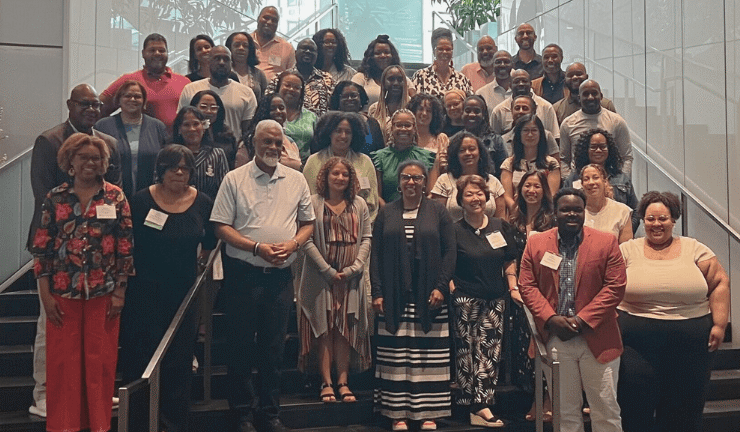The New Global Education Landscape

Carney, Sandoe & Associates has been conducting senior administrator searches since 1977 for independent schools in the United States and international schools outside the U.S. In fact, one of the firm’s founders, Bob Sandoe, served as a school head in both type of schools. When I came on board with CS&A years ago, the firm had done only a dozen international school searches in its first 31 years, an average of one search every two-and-a-half years. We now do 15-20 international schools searches per year and have found heads and directors for many of the top international schools in the world.
This change is telling. For one, it means the number of international schools are increasing at a dramatic rate as the global business community grows. It also means that there is something interesting going on inside the schools; their approach to teaching and learning are highly desired — and not just by Americans working overseas.
Here, I want to focus on international schools that offer either an “American” and/or international curriculum (such as the International Baccalaureate Programme), rather than schools that focus on some other national curriculum, such as the British National Curriculum, or on U.S. Department of Defense schools that serve U.S. nationals almost exclusively.
Brief History Lesson
When thinking about international schools outside the U.S., I like to divide them into four distinct “generations:”
Missionary schools
These schools were founded by enthusiastic Protestant missionaries who, in the mid-19th century, set out to convert Muslims and Orthodox Christians in the Balkans and Islamic world. Their efforts at conversion were not always successful, but along the way they established a number of educational institutions such the American College of Sofia, Robert College, Tarsus American College, and the American University of Lebanon, which after surviving complicated periods of transitions through two World Wars have evolved into world-class schools today. These schools serve mostly a host-country student population, but with much of the instruction in English and many of their graduates going on to top universities around the globe.
U.S. State Department supported schools
The U.S. Department of State provides assistance to 193 overseas schools through direct and indirect support designed to promote an American-style program. Largely serving families of U.S. State Department personnel, these schools saw major growth in terms of number and size in the 1960s, as an outcome of the U.S. counter to the rising Soviet Communist threat. They have held steady since. Such schools include the American Embassy School of New Delhi and others. The mission of these schools has been to promote quality educational opportunities at the elementary and secondary level for dependents of American citizens who are carrying out programs and interests of the U.S. Government abroad. But they also serve to increase mutual understanding between the people of the U.S. and the people of other countries.
Parent-founded international schools
These schools were established to serve the children of expats and host-country business people, and providing an American curriculum and approach to education. Such schools include Academia Cotopaxi (Quito) and American Community School Beirut. They are typically governed by boards elected from the parent body, and operate much the way independent day schools in the U.S. operate. There are hundreds of parent-founded international schools in operation around the world, many with names containing “American” or “American International.” They serve a broad segment of the international community, but also serve as the U.S. State Department recognized school for U.S. government employees.
Proprietary schools
Since about the year 2000, there has been an exponential growth in the number of these schools, which mostly serve host-country children. The reason for this explosive growth is a burgeoning middle class of parents who want their children to be successful in business, which in turn requires a degree from an English-language university. Since there are not enough established nonprofit international schools to serve this demand, a number of entrepreneurs and groups such as Nord Anglia and Cognita have established propriety (for-profit) schools around the world. Nord Anglia Education currently runs 55 schools in 25 countries — including 10 in the U.S. — serving more than 55,000 students. Interestingly, the company has partnered with The Julliard School to improve its performing arts education. More recently, it has partnered with MIT on the teaching of STEAM courses. Dozens of these schools have opened in recent years in China and the numbers could grow to the hundreds in China alone.
The major news here is less about the variety of international schools — though the differences are important — than about their rate of growth. IRC Research estimates that the total number of “English language international schools” has grown from roughly 1,900 about two decades ago — roughly the same number as the number of NAIS-member schools at that time — to more than 9,000 this academic year. During the same time period, there has been a much smaller growth in the number of independent schools in the U.S., although there has been an increase in the number of new international schools in the U.S.
Results and Trends
The exponential growth in the number of international schools around the world has resulted in a significantly increased demand for teachers and administrators, especially for native English speakers in both categories. While 20 years ago, most of these positions were filled by Americans and Canadians, we now see many more Australians and New Zealanders in the marketplace. We expect the source of qualified English-speaking teachers and administrators to further diversify over the coming years.
There are no solid figures comparing the numbers of positions to be filled versus the number of qualified candidates, but my general sense is that supply has not kept up with demand. My point here is not just that it’s a good time to be looking for jobs in international schools, especially if you are well qualified, but that the growth in the international school market is changing the dynamics of independent education worldwide, including in the U.S.
And all of us should be paying more attention. I would offer the strong suggestion that no school can afford not to be international in its vision. All of our schools need to focus on helping our students become global citizens.
Making the Connection
As someone who has worked in both independent schools in the U.S. and international schools in five countries, I appreciate the strengths of both types of schools. One of the reasons for the growth of “American-style” schools abroad is an appreciation, particularly among host-country parents, for a whole-child education that focuses on learning that takes place in sports, extracurricular activities, the arts, and community service, as well as in the classroom.
At the same time, more and more U.S. independent schools have added to their mission statements the goal of “preparing responsible global citizens,” because they understand the need for students to be ready for the global marketplace and to be engaged global citizens in our increasingly interconnected world.
Given all this, I would love to see three new trends begin.
First, I’d like to see more U.S. independent school teachers and administrators seek positions overseas.
There are many cutting-edge initiatives happening in international schools around the world — including efforts to instill key 21st-century skills such as creativity and critical thinking, as well as efforts to offer students avenues for personalized and experiential learning. At the same time, the opportunities for both professional and personal growth are many. I remember visiting a grade 4 classroom in The American International School of Muscat in which a map displayed the 14 countries represented among the 20 students in that class. Imagine how much growth for the students and teacher took place each day.
There are great adventures out there for educators who are risk-takers and want to expand their horizons and teaching skills. In an article in Independent School, educators Betsy and Bret Potash write eloquently about the value of U.S.-based educators getting out of their comfort zones and teaching overseas. The two left their “cushy school in Southern California” and took teaching jobs at the American College of Sofia (Bulgaria) around a decade ago and stayed for a number of years before returning to the states. On the one hand, Betsy values her personal growth. “It soon became clear that my students were world citizens as I had never been until now,” she writes. But perhaps more valuable was the professional growth. “We’ve learned about school community and international community, visited 17 different countries, and expanded our teaching with the challenges of a different system.” As a result, she writes, “we’ll bring a global perspective to our American classrooms next year [we they returned to the U.S.], not to mention a more real understanding of the challenges our international students face. We’ll be in a position to lead trips throughout Europe and to set up classroom exchanges between our kids and students in Bulgaria and other European schools.”
Bret taught history at the American College of Sofia. He also values the experience and says he brought back a more global context for teaching European history and a greater understanding of the lives and experiences of international students coming to the U.S. Ultimately, he says, “it is the very act of changing your life so drastically that is the recipe for growth.”
I’ve heard versions of their story from other educators who have taught internationally. If, as a teacher, you are looking for an opportunity for growth, this is about as good as it gets. Teaching in an international school is an opportunity to spread your wings and grow both personally and professionally. And if you have children, think of how much they will learn from classmates who come from all over the globe.
Second, I’d like to see more independent schools in the U.S. hire teachers from international schools abroad as a way to better prepare American students to become global citizens.
Students decide the teachers that they want to learn from, often based on the teachers’ background and the stories they tell. International school teachers who have had experiences that can’t be replicated in the U.S. can, in turn, inspire students to be risk-takers and dream about taking on challenges in other parts of the world. They also offer a new professional perspective to the faculty.
Third, I’d like to see U.S. independent schools and the international school community interact with each other with a greater sense of shared purpose — including through exchange programs, school visits, conferences, and the like.
When I was President of the International College in Beirut, Lebanon (3,500 students PK-grade 12 and 400 teachers), I stopped sending teachers to conferences for professional development. Instead, I set up week-long shadowing experiences between our teachers and those in schools around the world. Our teachers returned with much more enthusiasm and ideas that they had gained from peers in the schools they visited, which in turn had a very positive impact on learning in the classroom. I also had a colleague at Watkinson School in Hartford, Connecticut, tell me how much he appreciated having a Lebanese teacher explain some of the nuances of politics in the Middle East to his students, a learning opportunity that impressed them more than any educational material at their disposal.
There are plenty of organizations that serve independent schools and international schools. Within the U.S., there are organizations that help with the admissions and support of international students — in boarding and day schools. At the same time, U.S. schools offer students opportunities for global travel and exchange, while many teachers focus on ways to globalize the curriculum. However, there are very few organizations that serve to connect administrators and teachers globally to share their expertise and learn from each other. This needs to change.
For most of my professional life, the U.S.-based independent schools and international schools have more or less kept to themselves. But the global education landscape is changing rapidly — and for the better. The international schools I work with are doing remarkable things. Like top U.S. independent schools, they offer cutting-edge programs that include rigorous academics that prepare students well for college and beyond, along with well thought out approaches to social-emotional learning and the development of 21st-century skills.
The better international schools even have thought deeply about what they mean by a global education. Zürich International School, for instance, has carefully broken down the word “learn” into three distinct areas — conceptual learning, competency learning, and character learning — each further spelled out in a way that enables teachers and students to understand the difference and value of the three areas, how they are independent, and how they connect.
The international schools I know best have also dug deeply into the research on experiential learning. And it may be here where they have a distinct advantage — given the global interconnectivity of the staff, faculty, students, and parents. These schools know how to teach global citizenship, and they have thought deeply about diversity and how to offer a multicultural curriculum. Of course, they also know the importance of educational technology. The global network of international schools, in effect, demands that schools remain on the cutting edge of education technology to stay relevant to students and families.
I know that these advances mirror the work taking place in U.S.-based independent schools. My point is that I think it’s time to stop viewing the international education as something separate from U.S. independent education. Increasingly, both types of schools are becoming linked through purpose and mission and practice. There’s so much we can learn from each other.
There are some great organizations, like Round Square, that connect educators globally. But this connection doesn’t have to be through formal organizations and programs. As noted, when I was head of the International School in Beirut, in lieu of traditional professional development through conferences, we sent teachers to visit and learn from other schools. As it turns out, the teachers involved found the exercise extremely helpful and came back with lots of useful lessons and practices to fold into their work. The schools we visited were also pleased to have the opportunity to connect with our teachers. Perhaps best of all, the exchange was highly cost effective.
The world, as they say, is growing smaller every year. We are becoming increasingly globally connected. The independent school community in the U.S. has been great about sharing ideas with each other over the years, while a small number of educators have gone off on adventures overseas. But the landscape is changing. We’ll see more and more U.S. educators bringing their knowledge and skills to international schools and more international school educators teaching in U.S. independent schools in the coming years. I think it’s time we also start thinking more strategically and systemically about how we share ideas and connect both educators and students globally. As I see it, this is not only a great way to build better 21st-century schools, it is also one of the best ways we can build a better, more peaceful world.
Art Charles is a Senior Consultant with the International Schools Practice at Carney, Sandoe & Associates.








